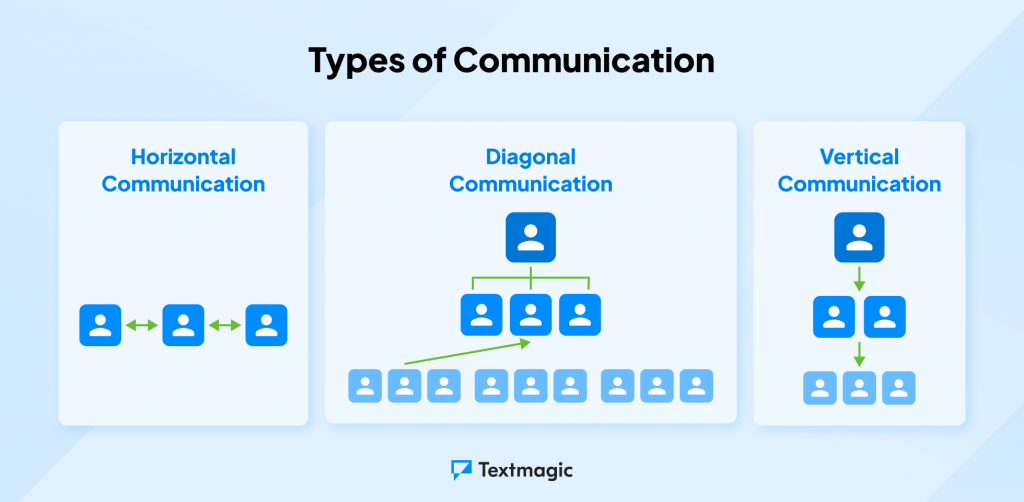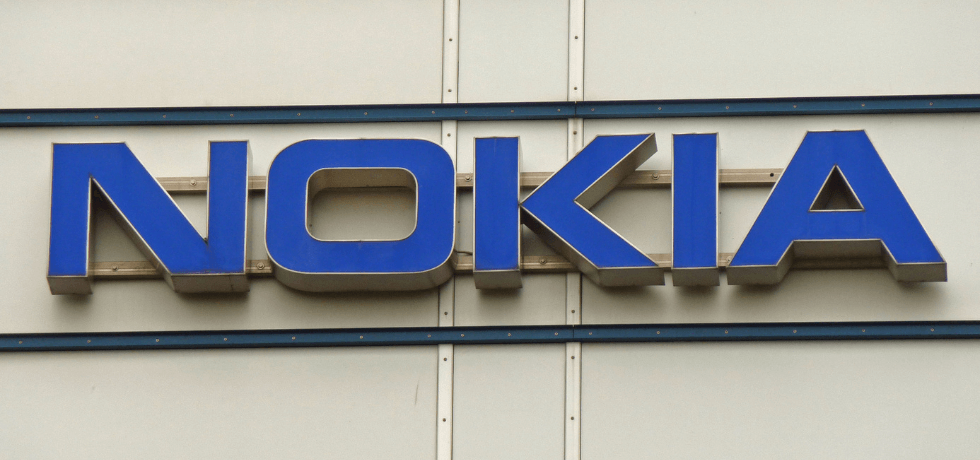
How much time does your team spend in meetings, writing emails, or sharing updates with colleagues? Are you confident that your current communication practices are driving your business success?
Statistics reveal that employees spend around 28% of their workweek on email management and nearly 83% in meetings, underscoring the critical role of effective communication. As your company expands, it’s essential to evolve your communication strategies.
In this article, we’ll dive into horizontal communication, its benefits, and explore other communication methods crucial for business growth.
What is horizontal communication?
Also known as lateral communication, horizontal communication is the exchange of information between individuals, teams, or departments at the same hierarchical level within an organization. This form of communication facilitates coordination, collaboration, and the sharing of information across different parts of an organization without going through hierarchical levels.
Horizontal communication is crucial for fostering teamwork and collaboration, improving problem-solving and decision-making processes, and increasing employee engagement and morale. It helps in breaking down silos, ensuring consistent and efficient information flow, and promoting a more agile and responsive organizational structure.
Effective horizontal communication leads to a more cohesive work environment, where employees can easily share knowledge, innovate, and address challenges collectively.

Horizontal communication vs vertical communication vs diagonal communication
Although often compared, horizontal communication differs from vertical and diagonal communication in both direction and purpose.
As previously stated, horizontal communication involves information exchange between peers or departments at the same hierarchical level. In contrast, vertical communication flows up and down the organizational hierarchy, facilitating the transmission of directives, feedback, and reporting between different levels of authority.
While horizontal communication promotes teamwork and peer interaction, vertical communication ensures alignment of organizational goals through top-down instructions and bottom-up feedback.
Diagonal communication, on the other hand, crosses both the hierarchical and departmental boundaries, enabling communication between individuals at different levels and different departments, which helps integrate various functions within an organization.

Key concepts of horizontal communication
In this section, we’ll explore the core elements that define horizontal communication, including lateral communication, peer-to-peer interactions, and the role of informal networks in driving organizational success.
Lateral communication
Lateral communication involves the exchange of information and coordination between employees or departments at the same hierarchical level. This type of communication helps streamline processes, share resources, and ensure that everyone is aligned with organizational goals.
Peer-to-peer interactions
Peer-to-peer interactions are direct communications between employees of equal status or rank. These interactions foster collaboration, build relationships, and enhance teamwork by allowing colleagues to share insights, feedback, and support directly with each other.
Informal networks
Informal networks are the unofficial and non-structured channels of communication within an organization. These networks, often based on personal relationships and social interactions, play a crucial role in the dissemination of information, problem-solving, and innovation. They complement formal communication channels and contribute to a more dynamic and responsive organizational culture.
Horizontal communication methods
Effective horizontal communication relies on various communication channels to facilitate the exchange of information and collaboration among team members at the same hierarchical level. These methods ensure that information flows smoothly and efficiently across the organization.
1. Meetings and discussions
Regular meetings and discussions among team members at the same hierarchical level facilitate the exchange of ideas, updates, and feedback. These can be formal, such as scheduled team meetings, or informal, such as spontaneous discussions.
2. Collaborative tools and platforms
Utilizing collaborative tools and platforms like Slack, Microsoft Teams, or project management software enables seamless communication and information sharing among peers. These tools support real-time messaging, file sharing, and collaborative workspaces.
3. Informal gatherings
Informal gatherings, such as team lunches, coffee breaks, or social events, encourage open communication and relationship-building among colleagues. These interactions often lead to spontaneous idea-sharing and problem-solving.
4. Internal social networks
Internal social networks or intranets provide a platform for employees to share updates, post announcements, and engage in discussions. These networks promote a sense of community and facilitate the flow of information across departments.
5. Email, instant, and text messaging
Email, instant messaging, and text messaging are essential methods for quick, direct communication between peers. These channels allow for the efficient exchange of information, questions, and updates, ensuring that employees can stay connected and informed in real-time, regardless of their location.
Email management tools can improve internal communication by reducing email overload and helping employees focus on meaningful interactions. By automating unsubscribes and cleaning up inboxes, teams can maintain higher productivity and streamline their workflow.
Benefits and challenges of horizontal communication
Horizontal communication offers several key benefits to an organization:
- Enhances collaboration and teamwork: By facilitating open communication among peers, horizontal communication helps build stronger teams that can work together more effectively.
- Improves problem-solving and decision-making: When team members share information and ideas freely, they can identify issues more quickly and develop better solutions.
- Increases employee engagement and morale: Open lines of communication make employees feel valued and involved, boosting their overall satisfaction and motivation.
- Facilitates knowledge sharing: Horizontal communication enables the exchange of insights and expertise, leading to a more informed and capable workforce.
- Reduces misunderstandings and conflicts: Clear communication among peers helps prevent miscommunications and resolves conflicts more efficiently.
- Supports innovation: Encouraging the free flow of ideas can lead to creative solutions and innovative thinking within the organization.
While horizontal communication offers numerous benefits, it also presents several challenges that organizations must address to ensure effective information flow and collaboration. It’s important to understand these challenges to implement strategies that can mitigate potential issues and enhance overall communication efficiency.
- Miscommunication and misunderstandings: Without clear guidelines, messages can be misinterpreted or lost, leading to confusion.
- Resistance to change: Employees accustomed to vertical communication may resist the shift to more lateral methods.
- Information overload: An excess of communication can overwhelm employees, making it difficult to prioritize tasks and information.
- Lack of clear hierarchy: Without defined roles, decision-making can become inefficient and responsibilities blurred.
- Dependency on technology: Relying on digital communication tools can lead to issues if there are technical problems or if employees are not proficient in using them.
How to create an effective horizontal communication strategy
Next, we will show you how you can craft a horizontal communication strategy that enhances collaboration, boosts employee engagement, and improves overall organizational efficiency. Here’s a quick step-by-step guide:
- Assess current communication practices: Start by evaluating your organization’s existing communication methods and identifying areas for improvement.
- Set clear objectives: Define the goals of your horizontal communication strategy, such as improving collaboration, increasing transparency, or enhancing problem-solving.
- Encourage open communication culture: Foster an environment where employees feel comfortable sharing ideas and feedback. This can be achieved through regular team meetings and open-door policies.
- Implement collaborative technologies: Utilize tools like Slack, Microsoft Teams, or project management software to facilitate real-time communication and collaboration.
- Use communication plan templates: Communication plan templates help streamline the development and implementation of your strategy, ensuring that all necessary components are covered and aligned with organizational goals.
- Provide training and development: Offer training programs focused on communication skills and the effective use of collaborative technologies.
- Foster trust and transparency: Build trust by being transparent about organizational goals and decisions. Encourage honesty and openness in all communications.
- Establish clear communication protocols: Develop guidelines for the use of communication tools, frequency of updates, and response times to ensure consistency and clarity.
- Monitor and adjust: Continuously evaluate the effectiveness of your communication strategy and make necessary adjustments based on feedback and changing needs.
Case studies
By examining how companies have effectively integrated horizontal communication strategies, we can better understand its tangible benefits. Next, we’ll showcase a real-life example of successful horizontal communication implementation within an organization, as well as a situation where ineffective communication contributed to a business’s decline.
Google is well-known for fostering a strong horizontal communication culture. The company encourages open communication across all levels through platforms like Google Meet and Google Chat.
Employees are empowered to share ideas and collaborate across departments, which has led to innovation and faster decision-making. Google’s open-door policy and regular “TGIF” meetings allow employees to voice concerns and share feedback directly with senior leadership, fostering a transparent and inclusive work environment.

Nokia
It’s important to mention that we can also gain valuable insights into the pitfalls of inadequate communication in instances where poor communication practices lead to challenges such as misunderstandings, delays, or project failures.
Nokia’s failure to maintain effective communication across its organizational hierarchy contributed to its decline in the smartphone market. The company’s siloed structure and lack of horizontal communication led to missed opportunities and delayed responses to market changes.
This case highlights the importance of fostering open communication channels and collaboration across departments to ensure agility and innovation in a rapidly changing industry.

Conclusion
Horizontal communication is a vital component of any organization, fostering collaboration, enhancing problem-solving, and ensuring a smooth flow of information across teams. By encouraging open communication, implementing collaborative tools, and fostering a culture of trust and respect, organizations can leverage its full potential.
Ensure that adequate training and change management support are provided at every stage. With thorough planning and securing buy-in from all levels of the organization, enhanced horizontal communication can be successfully implemented.
Frequently Asked Questions (FAQs)
Horizontal communication is the exchange of information between colleagues or teams at the same organizational level. It focuses on teamwork and efficient coordination between peers, without relying on managerial oversight.
Employees use horizontal communication to coordinate directly with each other, while vertical communication typically supports top-down instruction or bottom-up reporting. Horizontal conversations focus on collaboration; vertical ones often involve direction, approval, or reporting.
It helps teams work more efficiently, encourages mutual confidence across teams, reduces misunderstandings, and speeds up decision-making by cutting through hierarchical red tape.
These can include project updates, coordination between departments, brainstorming discussions, status checks, and task-related questions. Basically, any peer-to-peer communication needed to keep things moving.
Common barriers include unclear roles, lack of proper communication tools, conflicting priorities between teams, and assumptions that someone else is “in the loop” when they’re not.
Establish shared communication channels, define clear responsibilities, encourage openness across departments, and create feedback loops that allow teams to self-correct and stay aligned.
Related articles
Mastering customer advocacy: 5 Strategies for business growth
Read our latest guide to find out how you can improv...
How to elevate customer service through automated email responses
Check out the best practices for automating support ...
6 Reasons customers prefer texting over calling
Ironically, people prefer to use smartphones, not fo...
Creating an effective promotional text campaign
Everyone has a phone, and today most online shopping...
Transactional SMS explained: Why should your business use it?
In the crowded world of email communications, where ...




